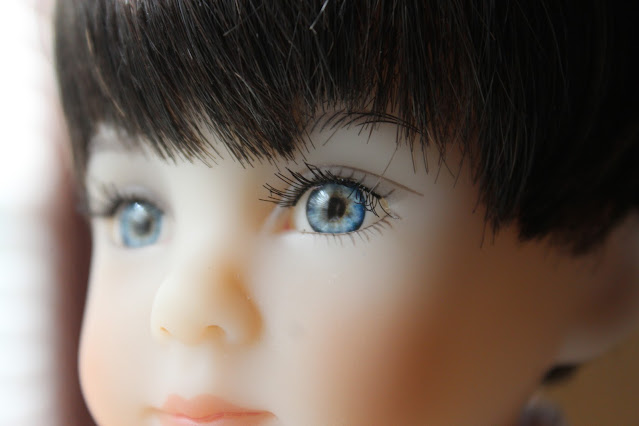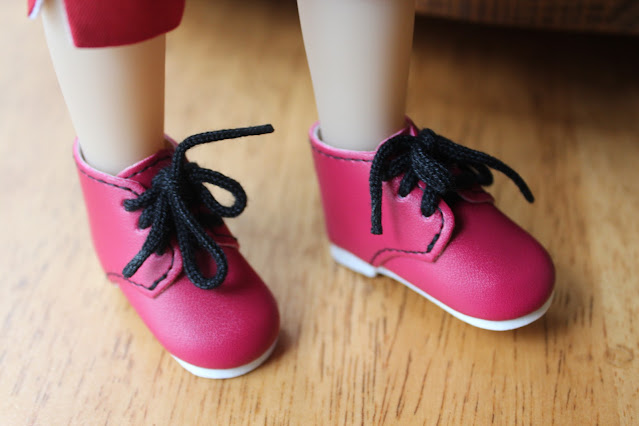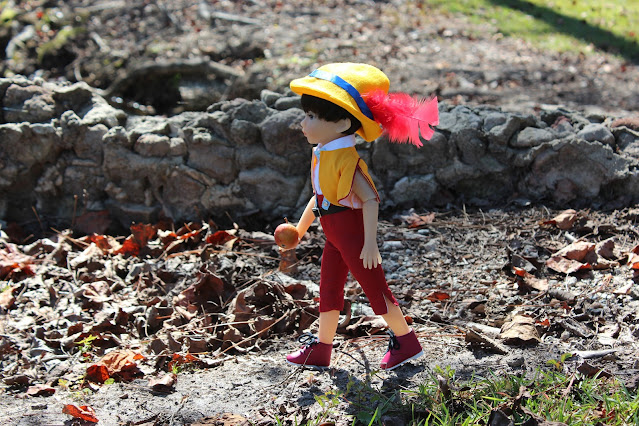This is Black History Month. I am late in getting a post up, but this year it seems more important than ever to focus on and celebrate the accomplishments and contributions of African Americans. I try to keep the blog my 'happy place', but the world has gone crazy, and it scares me.
I was really wanting to post about the Ida B. Wells doll from the Inspiring Women series.
I haven't been able to find her in a store though, and the cheapest I could find the doll online was going to end up being over $30, and closer to $40 with the postage, and I wasn't wanting to spend that right now. I have a birthday coming up very soon, and I don't know what Ken may have already bought. Not that he should buy me anything, because I totally failed his birthday. I had several things in mind for him, which I could either not find, or didn't work out for various reasons. I did bake him his favourite birthday cake, (The same kind I showed you that I baked for Lori's birthday. You can see what it looks like HERE.) Anyway, I have decided to instead resort to using stock Mattel pictures and telling you a bit about Ida B. Wells. First, the real Ida B. Wells.


To start with, Ida B. Wells was born in Holly Springs, Mississippi, in 1862. Her parents were slaves, although her father was born to a White man and a slave woman. Ida's mother had been sold away from her parents and siblings, and after the Civil war she tried, unsuccessfully, to find her family. Ida was born in the house where her parents lived as slaves. In those days it was called the Boling-Gatewood House. Now it is called the Ida B. Wells-Barnett Museum. (Go Ida! My sister was just today talking about Ronald McNair, who, at the age of nine, was denied the right to check a book out of a library because he was an African American. He sat on the counter in protest, and the librarian called the police and his parents. The police made her give him his books. He went on to earn a PhD. and become an astronaut. (He unfortunately died in the Challenger explosion in 1986.)The library is now named after him. My sister said if she were him, she wouldn't have allowed them to name the library after him. I said I thought it was the ultimate revenge.) When the Civil War ended Ida's father, who had been taken at 18 by his father to Holly Springs to become a carpenter's apprentice, ran a successful carpentry business. Her parents also became politically active in The Reconstruction. Ida attended Shaw, (now Rust), college, where her father was a trustee, until she was expelled for a dispute with the president of the university. Already Ida was voicing her opinion, no matter the cost.
Sadly, Ida's parents and baby brother died in a Yellow Fever epidemic when she was 16. To avoid her remaining five siblings being separated and sent to foster homes, she took a teaching job to provide for them. Ida eventually moved her family to Memphis, Tennessee.
In 1884, after buying a ticket for the First Class ladies car on a train, Ida was told by a conductor to move to the already overcrowded smoking car. Ida refused and was thrown off the train. She hired an African American lawyer, who was paid off by the railroad. She then hired a White lawyer and sued the railroad. She won the case in the local circuit court, and was awarded $500, but lost when the case was appealed and went to the Tennessee Supreme Court.
Ida was a co-owner of the newspaper The Memphis Free Speech and Headlight. After a friend was lynched in 1892, Ida became one of the first people to investigate the lynching of African Americans. She published a pamphlet, "Southern Horrors: Lynch Law in all It's Phases", and published articles on the subject. Her articles were carried, across the country, in newspapers owned by African Americans. From her investigations of lynching, Ida became aware of the case of an African American man who was lynched because he was having relationship with a White woman. She found there were many cases of African American men and White women in relationships, where the man was lynched as a rapist, to 'save the reputation' of the women. She published an editorial in May of 1892,part of which read, "that old threadbare lie that Negro men rape White women. If Southern men are not careful, a conclusion might be reached which will be very damaging to the moral reputation of their women." Four day later, Ida, who was in Manhattan at the time, was threatened by the newspapers The Daily Commercial and The Scimitar, The offices of Free Speech were trashed and the printing press burned. Ida's co owner, James L. Fleming, fled Memphis, and Ida herself never returned. At the time, the trains were being watched for her.
In 1895 Ida married African American lawyer Ferdinand Barnett. They had four children. Ida remained an activist, and travelled abroad to lecture, to spread the word about lynching. She criticized women's Suffrage activists for ignoring lynching, and in turn was ridiculed by Suffrage groups. In spite of that, Ida supported women's rights and was one of the founders of the National Association of Colored Women's Club, which worked to support women's suffrage and civil rights. Although often mentioned as one of the founders of the NAACP, her role is sometimes disputed.
Ida B. Wells-Barnett passed away in March of 1931. In 2020 she received a posthumous Pulitzer Prize citation for "outstanding and courageous reporting on the horrific and vicious violence against African Americans during the era of lynching".
There's a great page to read about Ida B. Wells HERE. Of course, there's also the Wikipedia page HERE.
Now, on to the doll. The Ida B. Wells doll is one of the most recent in the Barbie Signature Inspiring Women series by Mattel, having been released in January. Previous dolls in the series have included Billie Jean King, Helen Keller, Maya Angelou, Florence Nightingale, Eleanor Roosevelt, Susan B. Anthony, Sally Ride, Ella Fitzgerald, Rosa Parks, and Katherine Johnson. You can read about those last two, and see the dolls, in my post HERE. (And for those of you who thought I should have just kept Rosa Parks too, even though she was received when Walmart's website switched Ken's order from Katherine Johnson to Rosa Parks without him noticing, and I promised to return her...well, Ken never returned her, and gave her to me for this birthday. He thought I could do a post on her, but I already did that when she was still in her box. Maybe I will do a post showing Rosa free from her box.)
The doll uses the Curvy Made to Move body, according to the Mattel website.
I don't know about her having jointed knees and ankles, but she certainly has jointed elbows and wrists, as we can see from the stock Mattel photos.
According to Mattel the doll has been 'sculpted in her likeness'.
I don't think she looks much like the real Ida, and looks very like other dolls in the Barbie line. What do you think? I do think they did a pretty good job of copying the hairstyle.
 |
| Compare this to the picture of the real Ida B. Wells above. |
Her dress is wonderful.
The fabric looks to be a really nice quality, and the trims are fairly in scale.
And those boots!
 |
| These boots are awesome! |
Mattel finally did it! These are the boots they should have put on their May Poppins doll, (in a different colour, of course),instead of regular high heels with spats over them.
She even comes with a tiny copy of her newspaper.
I really like this doll, even if I didn't know anything about the real lady. I think she's one of my favourites in the series. I think I'd like to have this doll, Susan B. Anthony, Ella Fitzgerald, and Helen Keller.
I'll be back very soon, because the Doll Book of the Month Club is coming up, plus I have another couple of posts planned, and there's a doll show in two days! Whew! So I'll see you soon.
















































































































